This summer, I wasn’t going to take any photographs of my visiting ruby-throated hummingbirds (Archilochus colubris). I have been watching these birds with enthusiasm at the feeders and witnessing their antics while chasing each other around the yard. I decided, I simply couldn’t resist and I needed to take advantage of their being here. It is, after all, a very short time. I figured this would also give me an opportunity to exhibit my photography skills. As you know, the flight patterns of these birds are extremely fast and not the easiest of birds to photograph clearly. Their beating wings can be especially difficult to photograph. There are many tips and tricks out there, but I do my own thing and will tell you exactly how I achieved taking my photographs. As any photographer knows, it isn’t difficult to take hundreds of photographs of their subjects in just one session in order to achieve the optimal photograph. That is exactly what I did. With many sessions that included hours of waiting and watching and sorting through many photographs, I believe I have found my favorites. Here are a few steps I have taken to photograph these energetic birds.
I usually put out three hummingbird feeders for the summer. In order to attract more hummingbirds to the property this year, I added another and planted additional flowers in my flower garden. The feeder is quite small and I have to refill it practically every day, but it turned out to be a favorite among my hummingbird visitors.
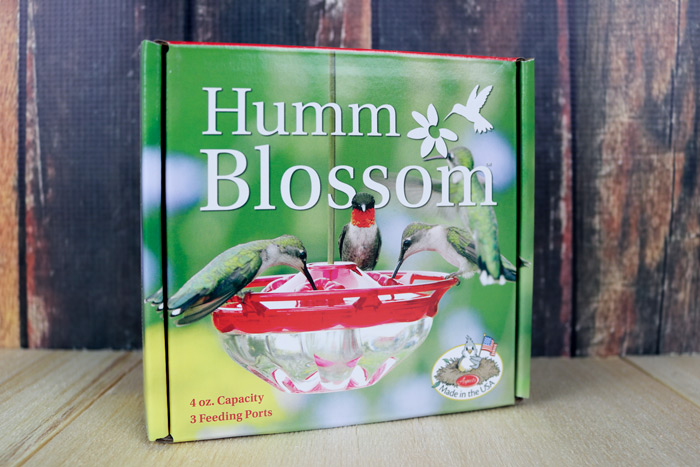
I have had really great success with this 4 ounce, rose-colored Aspects Mini HummBlossom Hummingbird Feeder.
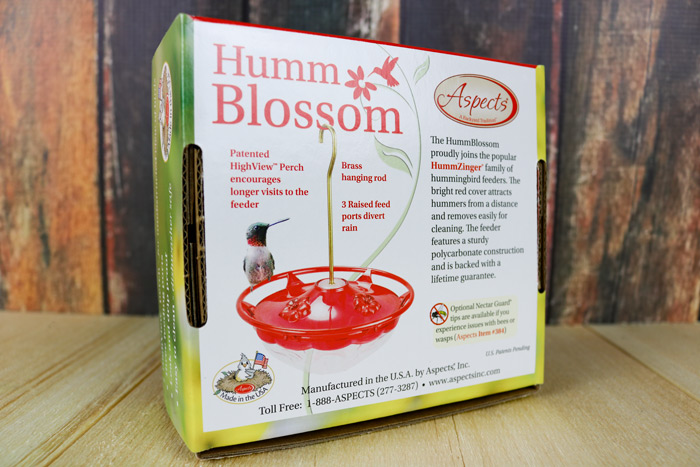
This feeder has three feeding ports and is also a breeze to clean.
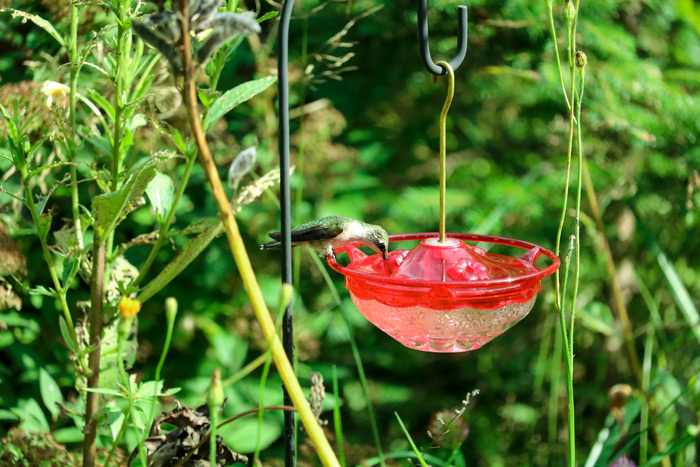
I decided to place my new feeder in the middle of the flower garden. In this spot, there is plenty of shade and plenty of places for the hummingbirds to perch safely before drinking from the feeder.
There were a variety of flowers already planted and growing around the property when we moved here to Maine. Since then, I have planted even more. This includes lily-of-the-valley (Convallaria majalis) black-eyed Susan (Rudbeckia hirta) globe thistle (Echinops bannaticus) English lavender (Lavandula angustifolia), blanket flowers (Gaillardia) sunflowers (Helianthus annuus) red runner beans (Phaseolus coccineus), coneflower (Echinacea) and lupine (Lupinus). Although the hummingbirds visit the flowers that I have planted, I noticed they tend to favor two of the species of flowers that were already growing here. This includes bee balm (Monarda) and phlox (Polemoniaceae). In addition to the hummingbirds enjoying the flowers, I have found my newly planted flower garden benefits many species of insects as well.
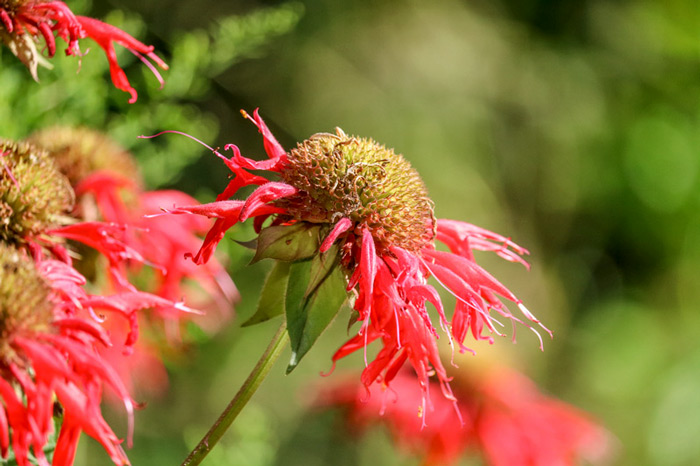
Bee balm growing in the garden.
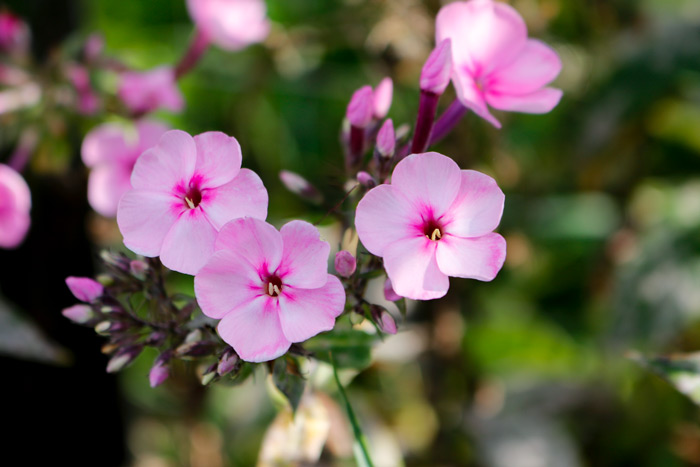
Light pink phlox growing in the garden.

At this late time in the season, the bee balm is beginning to look a little worse for wear. Nonetheless, they are still providing beneficial nutrients to the hummingbirds and species of insects like this bumblebee (Bombus).

(f/5.6, 1/2000 sec., ISO 640)
A hummingbird moth (Hemaris) enjoy bee balm as well.
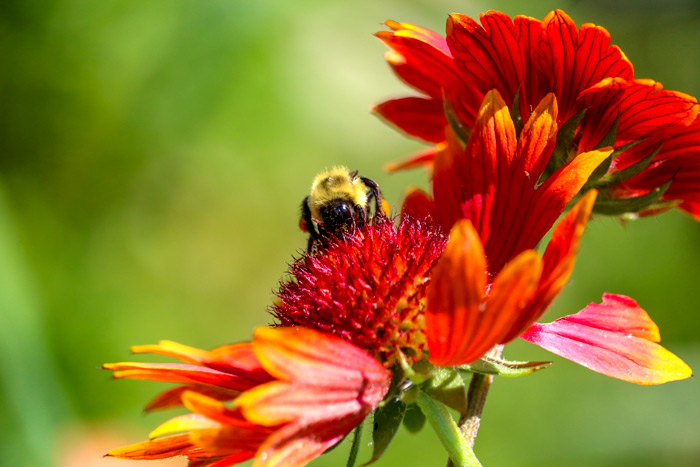
A bumblebee visiting a blanket flower.
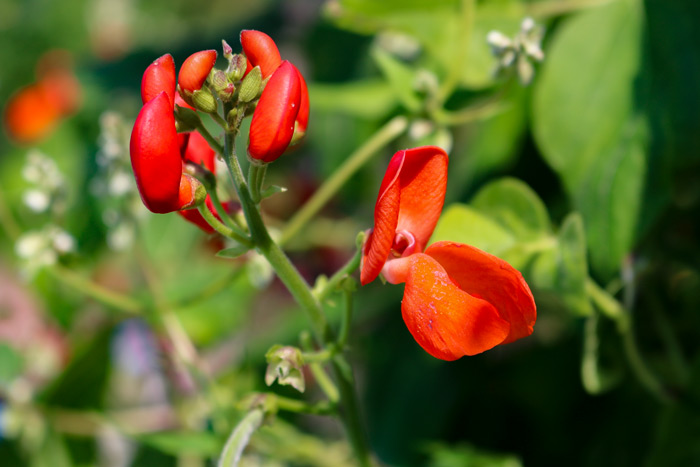
Red runner bean blooming in the vegetable garden.
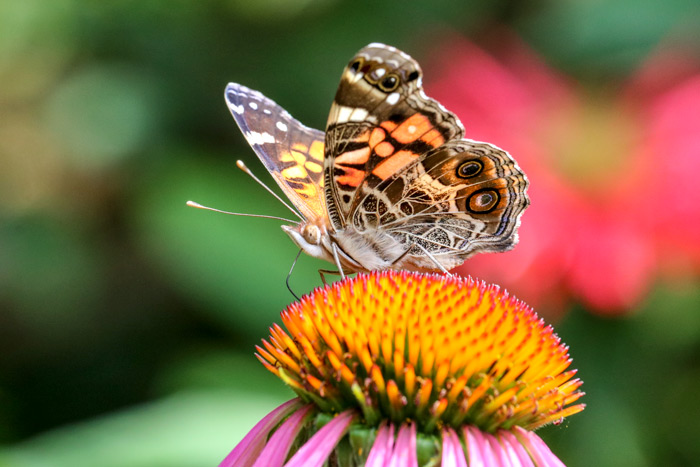
An American lady butterfly (Vanessa virginiensis) enjoying the nectar of a coneflower.
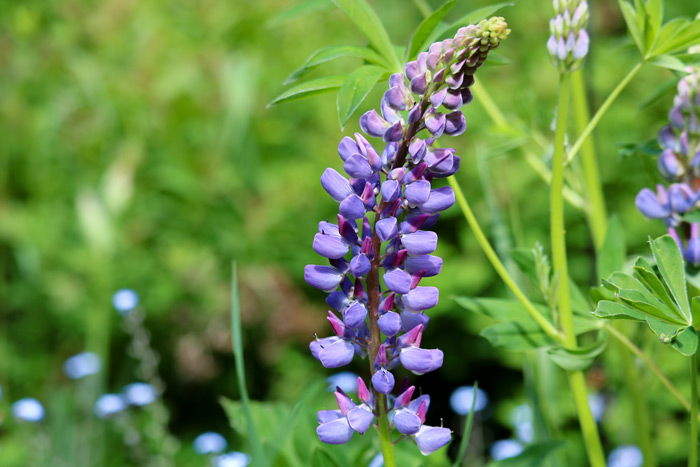
This year’s new lupine.
Now for the hummingbird photographs! I have found the more time I spent outdoors with these birds, they eventually got comfortable with my presence. I believe there were a few hummingbirds that actually enjoyed getting their photographs taken. With our unpredictable weather here in Maine, I took advantage of both sunny and cloudy days as well. As I have mentioned, I use a Canon T6i camera. With this type of photography, I also like to use my Canon 55-250mm lens. I also don’t use a tripod. This allows me to stay at a comfortable distance and move freely while allowing the hummingbirds to execute their normal behavior.
As I also mentioned above, I use the shutter priority setting on my camera. Without this, it would be impossible for me to achieve the type of photographs I was looking for. Not only are these birds extremely fast movers and as soon as I got any type of focus on these birds, then they are off again and on to doing something else. This is especially the case when you have multiple hummingbird visitors. I cannot count the number of times I have witnessed while one hummingbird was feeding from a flower or the feeders, they are chased off by another hummingbird. No wonder these birds use so much energy and require so many calories, they do a lot of daily horse playing!
In regard to shutter priority, this is essential for hummingbird photography. This allows for a fast shutter speed and crisp hummingbird photographs. Hummingbirds beat their wings about eighty beats per second. For some, blurred wings in photos will do, but if you want to capture a sharp wing, attention must be paid to shutter speed. Optimal shutter speed should be between 1/1000th and 1/2000th of a second. Also, something to consider is, by using a higher shutter speed the ISO will then be higher. Photographers may find that they have a lot of noise in their photographs with a higher ISO. This is one of my pet peeves. In order to combat this, I prefer to shoot on sunny days, but sometimes these things can’t be helped. Photoshop can be used to help remedy this. Sometimes, photographers will use flash to brighten the hummingbird and blur the background, but I find this to be too invasive for the birds. Photographers will also manipulate the scene to capture better photographs of hummingbirds, but this is why I use what nature has given me. Flowers and feeders will do just fine. I believe the less I interfere with their routine, the better. So here it goes. I think these are the best hummingbird photographs that I have taken in the past couple of weeks. I hope you enjoy.

(f/5.6, 1/2000 sec., ISO 800)
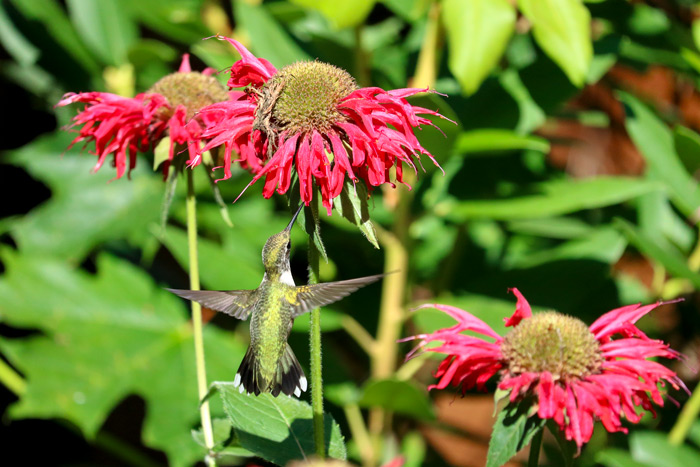
(f/5.6, 1/2000 sec., ISO 1000)
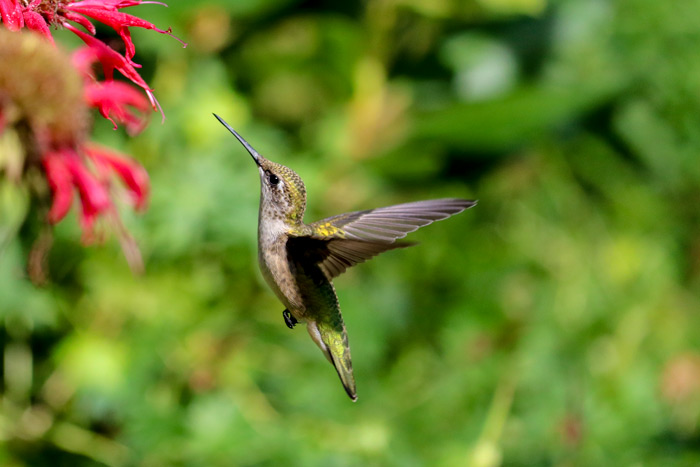
(f/6.3, 1/2000 sec., ISO 800)
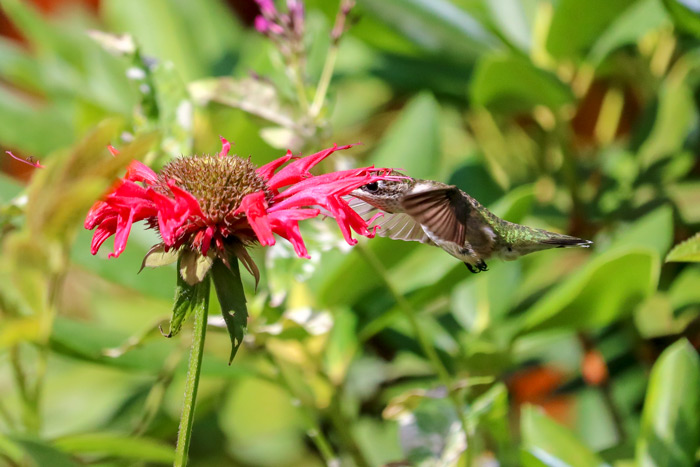
(f/5.6, 1/2000 sec., ISO 640)
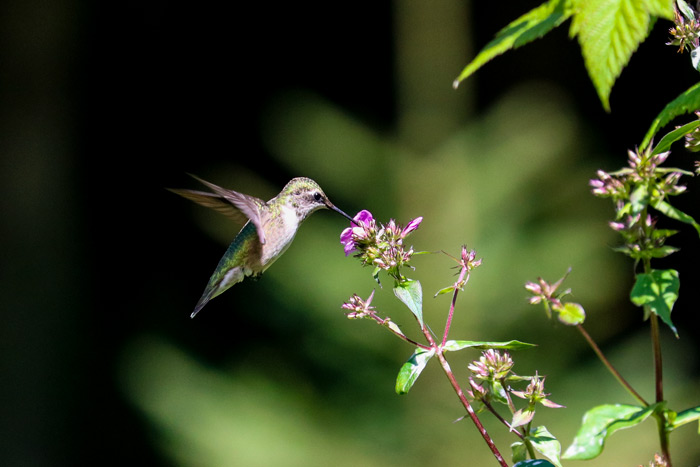
(f/5.6, 1/2000 sec., ISO 1600)
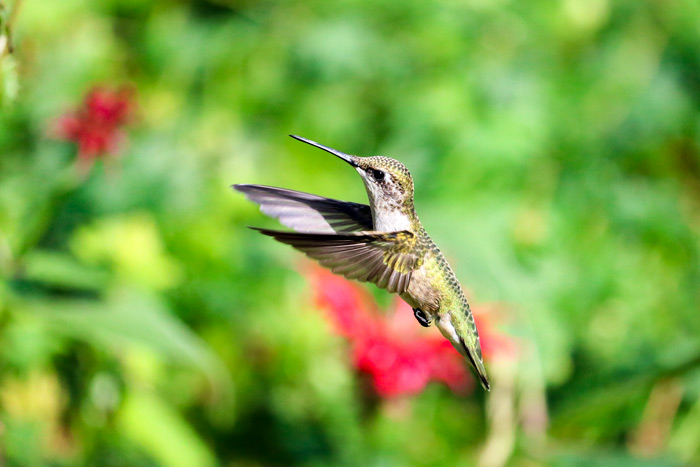
(f/5.6, 1/2000 sec., ISO 800)

(f/6.3, 1/2000 sec., ISO 1000)
I enjoy watching these entertaining birds while they are here and I will be sorry to see them go in the coming weeks. Depending on where you live, it is important that you keep your feeders out until it has been at least two weeks since you have seen your last hummingbird. These birds have many miles to travel during the fall and they will need essential nutrients to fuel their trips.
By all means, I am no expert, but I hope I have helped you get closer to taking beautiful photographs of hummingbirds, too. Next summer, I hope to keep practicing taking more photographs of these fascinating birds. Until then…
Leave a Reply